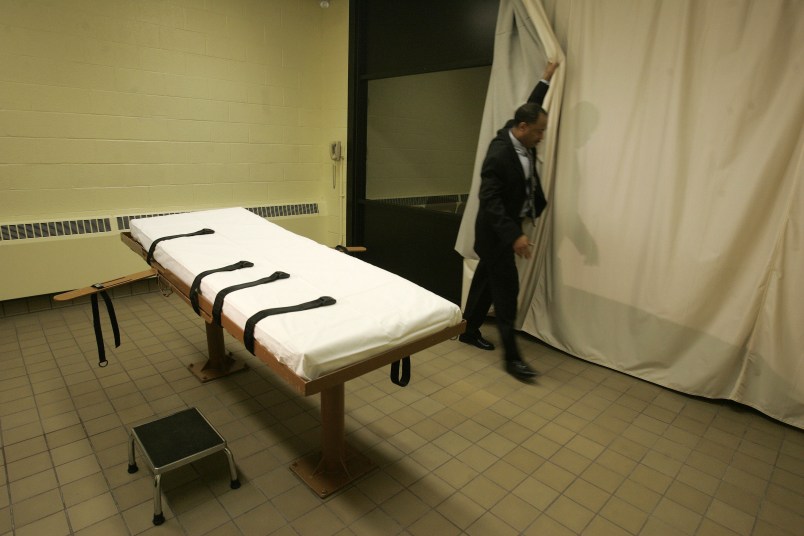OKLAHOMA CITY (AP) — New procedures to improve Oklahoma’s execution process must be implemented before the state resumes putting prisoners to death by lethal injection, Gov. Mary Fallin said after investigators presented their findings about an April case in which the inmate writhed and moaned on the gurney.
In its report released Thursday about the troubled April 29 execution of Clayton Lockett — who was declared dead 43 minutes after his execution began — the state Department of Public Safety made 11 recommendations include more training for medical personnel and having additional supplies of lethal drugs and equipment on hand.
Corrections Director Robert Patton is reviewing the guidelines, Fallin said, adding that she expects the department to implement them before executions resume. Three executions have been set for November and December, the first on Nov. 13.
The governor said she still believes the death penalty is a just punishment for those guilty of the most heinous crimes, but that the state must make sure it’s carried out effectively.
“If I am assured as governor that those protocols are in place … then we can look forward to returning to executions. But until all of those protocols have been put in place, we won’t be having executions,” Fallin said.
Corrections spokesman Jerry Massie said Patton had no immediate comment. But Michael Thompson, commissioner of the Department of Public Safety, echoed Fallin.
“The last thing we want to do is rush this and have an issue come up where we’re not prepared for an execution,” Thompson said.
Fallin said the report verified what authorities had believed: “There were significant complications establishing an IV line in Clayton Lockett.”
The report blamed Lockett’s flawed lethal injection on poor placement of intravenous lines. The medical team could not find suitable veins in Lockett’s arms, legs, neck and feet, leading them to insert it in his groin, the report said.
Out of modesty, no one monitored the intravenous line, a job that is the normal duty of Oklahoma State Penitentiary Warden Anita Trammel, who decided to cover Lockett’s body — and the IV — with a sheet. When it became apparent the execution wasn’t progressing normally, the execution team pulled back the sheet and noticed a swelling larger than a golf ball near the injection site.
“Those involved with the execution stated that they could have noticed the problem earlier if they had been monitoring the insertion site during that time,” lead investigator Capt. Jason Holt said.
Oklahoma also used the sedative midazolam for the first time in Lockett’s execution, but Thompson said all three drugs — midazolam, vercuronium bromide and potassium chloride — worked as planned.
Midazolam was also used in lengthy attempts to execute an Ohio inmate in January and an Arizona prisoner last month. Each time, witnesses said the inmates appeared to gasp after their executions began and labored for air before being pronounced dead.
Thompson said no single person was to blame for the problems in the execution and no charges are being considered, leading critics to charge that the report does not address accountability.
“It protects the chain of command,” said Assistant Federal Public Defender Dale Baich, an attorney who represents 21 death row inmates who have sued the state Department of Corrections to block their executions.
“Once the execution was clearly going wrong, it should have been stopped, but it wasn’t,” Baich said in a statement. “Whoever allowed the execution to continue needs to be held accountable.”
Patton, who had halted the execution, had said Lockett died of a heart attack, but autopsy results released last week said he died from the drugs.
Lockett had been convicted of shooting Stephanie Nieman, 19, with a sawed-off shotgun and watching as two accomplices buried her alive in 1999.
Copyright 2014 The Associated Press. All rights reserved. This material may not be published, broadcast, rewritten or redistributed.



